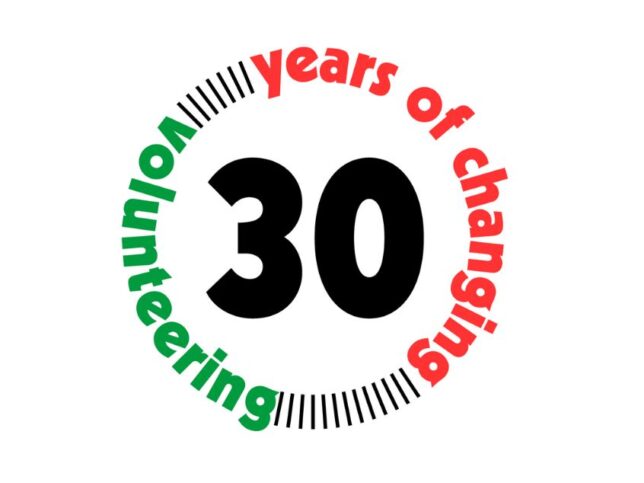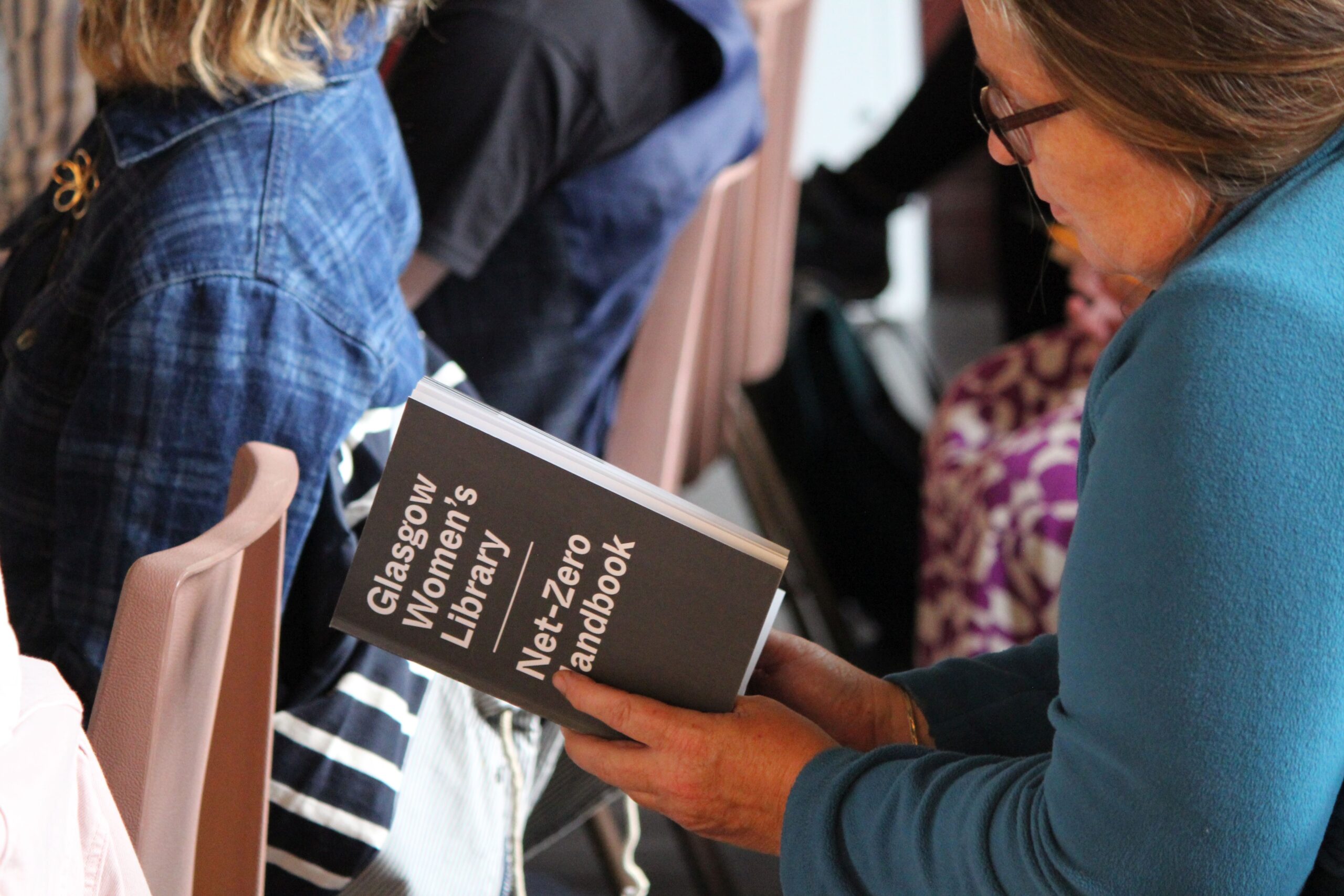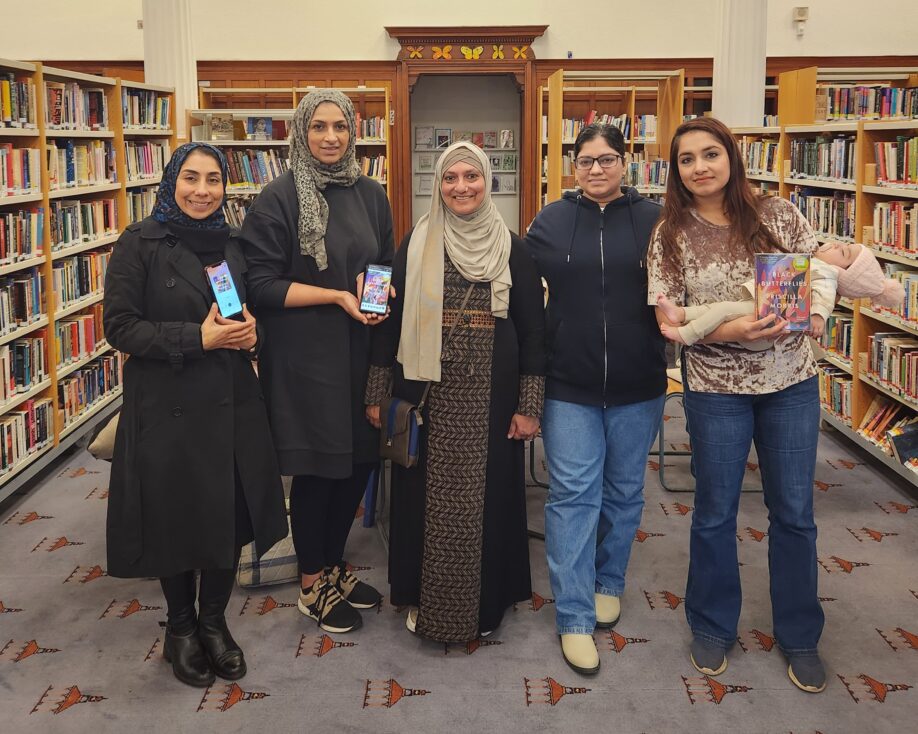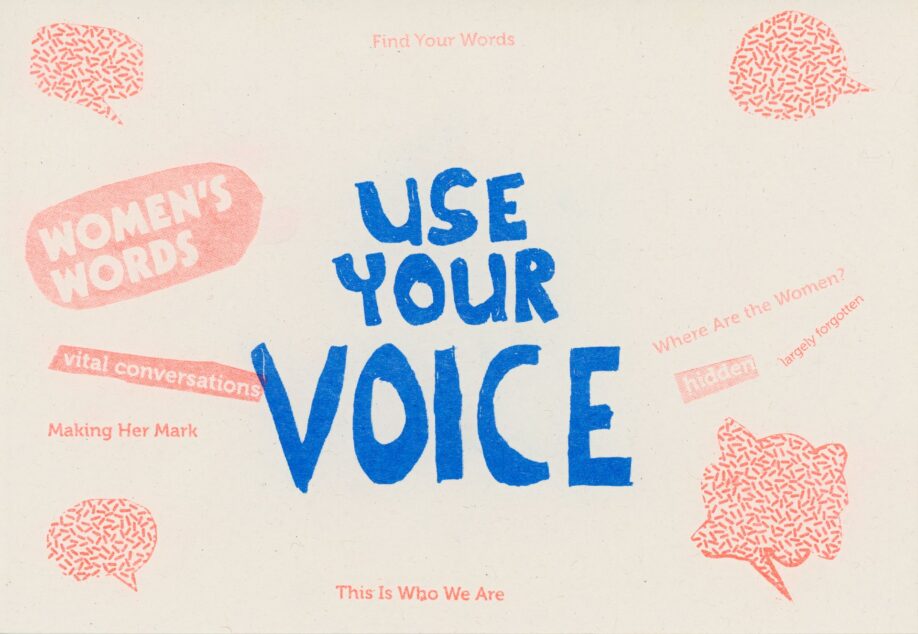
Glasgow Women’s Library (GWL) celebrated its 30th anniversary in September 2021. As we now enter our fourth decade we ‘look back to move forward’ through our 30 Years of Changing Minds Blog Series by staff and volunteers.
This blog was researched and written by Catherine who is doing a six month placement at GWL as part of her PhD.
As part of my placement at GWL, I’ve spent time in the archive researching the library’s international connections to queer and feminist groups and institutions. I’ve also had the pleasure of speaking with Adele Patrick about her memories of Women in Profile’s early links to international groups. [Women in Profile (WiP) was set up in the late 1980’s and was the precursor to GWL which was founded in 1991]. Many of the strongest early links were with feminist and lesbian groups in Germany. Reassembling the international connections that inspired the women of WiP in the late 1980s and early 1990s requires pulling together both the material traces of these organisations in GWL’s archive – photos, flyers, postcards, programmes – and listening to founding members like Adele describe their memories of personal, often intimate dynamics of feminist organising and institution-building, along with the emotional experience of forging those connections.
Chance and personal bonds first drew WiP to Germany in the late 1980s. What Adele describes as a “sweet spot” of political circumstances, resources and friendships led to “deep and lasting” connections with German feminist organisations, particularly Bildwechsel, a feminist audiovisual archive Hamburg, and Künstlerinnenarchiv, an archive of feminist artists in Nuremberg. The Glasgow activists first made contact with German feminists through a friend of WiP member Kate Henderson, who moved to Oldenburg in the late 1980s and became involved with a local feminist network. When she invited the WiP members to attend Oldenburg’s women’s festival, they were impressed by the small city’s thriving lesbian feminist community. Over the following years, WiP members travelled to feminist organisations in other German cities, including Frankfurt, Nuremberg, Bonn and Berlin. These trips exposed WiP members to a countercultural feminist network that was well-resourced and highly-organised. “It was gobsmacking for us and inspiring,” Adele recalls, “to see, even in a city like Nuremberg, that’s smaller than Glasgow, that it had two women’s archives, it had a women’s café.” Programmes and leaflets in GWL’s archive attest to the variety of women’s organisations and services, both grassroots and more established, that co-existed in Oldenburg and Nuremberg at this time. Adele was also struck by the “astonishing” visibility and centrality of lesbians and lesbian feminist politics within these networks. In Glasgow, she felt, discussions of lesbian sexuality were dogged by a lingering sense of shame and prohibition. In Germany, WiP members experienced a “fully out community” that felt near-utopian in contrast. Four decades after the end of the Second World War, German feminists were grappling with the legacy of fascism in their homeland, sometimes within their own families. This post-war generation rejected any form of “closed-down” or conservative thinking and sought to develop a countercultural, lesbian feminist, anti-fascist social and political landscape.
The level of state support that German feminists received was also utterly unlike the WiP activists’ experience in Scotland, where they survived with no external funding. Financial backing from the German Green Party and other progressive funding meant that feminist institutions were operating on a scale unheard of in the UK. The Frauenkultur Museum in Frankfurt, for example, occupied a former Panzer tank factory, a space larger than Glasgow’s Tramway. The WiP activists were impressed by the organisational prowess of the German feminist movement, and the “deep progressive” thinking that drove its work, but Adele also noted shortcomings as they travelled from institution to institution. Although the German organisations thought about their work on a global scale, it was a profoundly white movement that often did not seem to engage with the realities of Germany’s migrant and racialised populations. At the Frauenmuseum in Bonn, Adele remembers an organisation run by an all-white board, where most of the less public-facing cleaning and caretaking work was undertaken by Turkish women. Other feminist museums and archives did not seem particularly attentive to the needs of disabled women, with archival collections stored in inaccessible spaces. Still, WiP members learned from the groundbreaking work taking place in these organisations. For Adele, one of the most significant aspects of the trip was the experience of being respected and taken seriously as a feminist and an artist– a sharp contrast to what she describes as dismissive and hostile attitudes towards WiP’s work in Glasgow. The German feminists, she says, “really respected” and “nurtured us”; it was a “loving, caring, properly sisterly” environment.
Along with personal links to feminists in Oldenburg, WiP connected with German groups through the IAWA, an international association of women’s art organisations. They learned about the existence of this network through their London-based sister organisation, the Women Artists Slide Library. In 1989, the WASL got in touch to ask if WiP would be willing to host the IAWA’s conference the following year, to coincide with the festival marking Glasgow as the European City of Culture. As Adele remembers it, “we were naïve enough and daft enough to say yes.” That year, a crowd of international delegates arrived, including members of Bildwechsel and Künstlerinnenarchiv. In a “strange coincidence”, WiP also discovered that Glasgow was twinned with Nuremberg. They were able to leverage this link to receive funding from Glasgow City Council for a trip to the German city in the year after the 1990 City of Culture Festival in Glasgow. These visits strengthened personal bonds between the UK and German women, who stayed in each other’s homes and travelled together. When a group of German feminists visited Glasgow, WiP members returned the favour by taking them to stay in a council-owned cottage in Corriegrennan. The activists, Adele recalls, were not “formal colleagues, it was a friendship network.”
WiP’s initial visits took place in a still-divided Germany. The fall of the Berlin wall in 1989 ushered in a period of rapid change as the country reunified. Cultural and equalities-focused institutions bore the brunt of the economic restructuring that accompanied reunification. Much of the “largesse” that characterised the state-supported feminist movement in Germany quickly dried up, leading to the closure of some institutions. Adele recalls that this was “quite a stark difference”, and exchanges with German groups became less frequent after this point. The experience of different feminist institutions after reunification points to their diverging approaches to funding. While larger institutions like the Frauenmuseum in Bonn relied on state and local government funding, Bildwechsel and Künstlerinnenarchiv remained staunchly independent, and continue to be volunteer-run. While state funding allowed some German organisations to operate on an ambitious scale, it also left them vulnerable to the winds of political change. On the other hand, the largely-unfunded approach of some grassroots groups limited participation to activists who had the resources to work for free. Exposed to these poles of financial strategy, GWL eventually chose a “jigsaw” approach, relying on many different funding streams to build a sustainable institution supported by both paid staff and volunteers.
WiP’s connections with German feminist networks had a lasting impact on what became the Glasgow Women’s Library. The UK feminist activists were inspired to take their work seriously, and to document that work more thoroughly. Some of the leaders of these organisations, Chris Regn of Künstlerinnenarchiv and Birgit Durbahn of Bildwechsel, became personal mentors for Adele – “I held them in huge esteem and still do.” The orange-accented displays of a recent GWL exhibition – Pre-internet community formation – paid homage to the colours of Bildwechsel’s archive. Like this exhibition, GWL’s archive records the ways that an international community of feminist artists and activists relied on print culture and personal bonds to make contact, share resources and learn from one another.

This content is licensed under a Creative Commons Attribution 4.0 International License.




